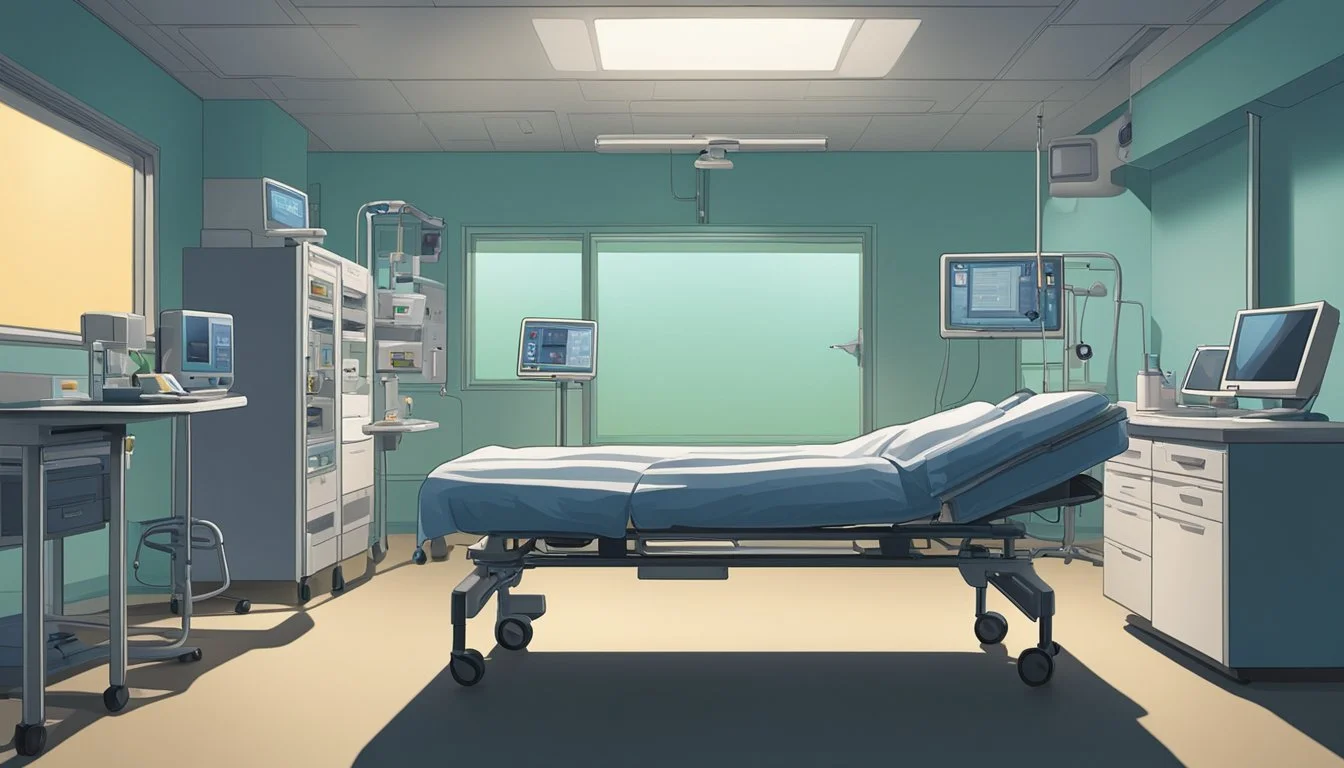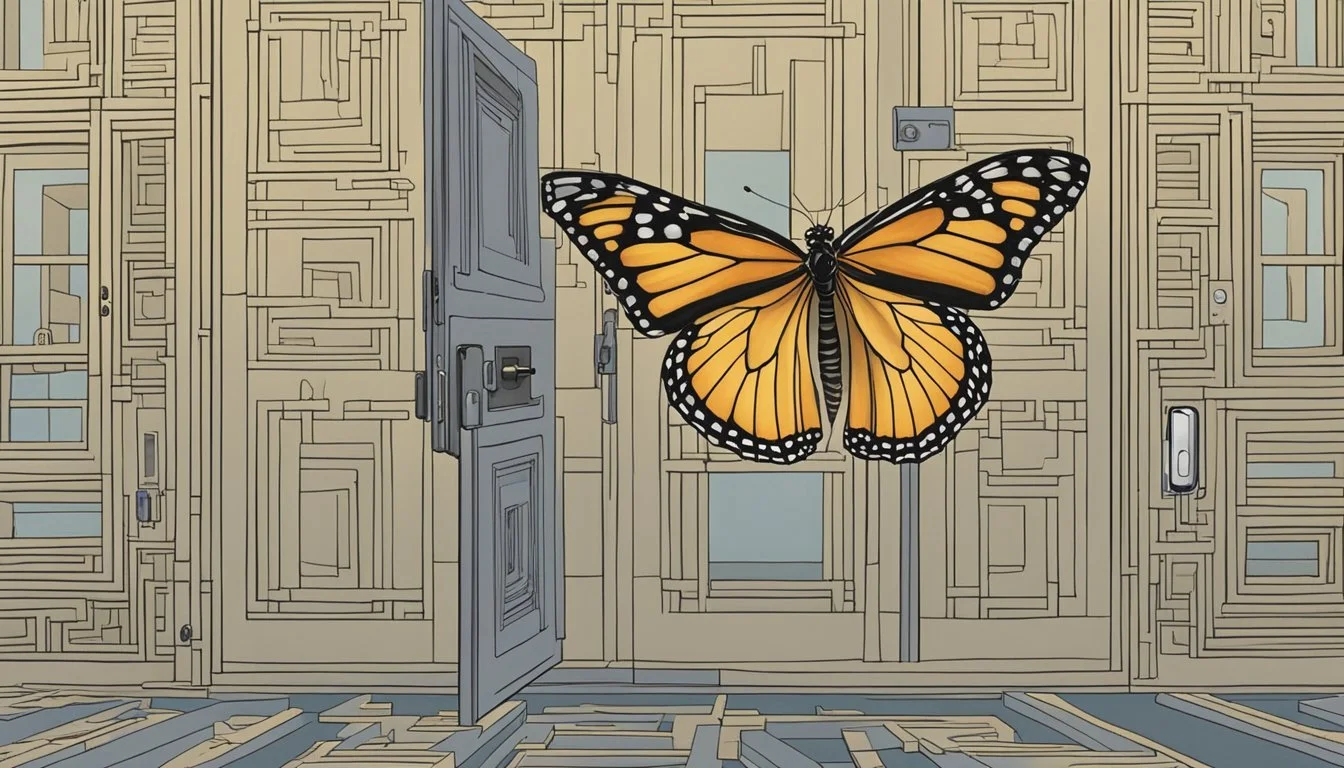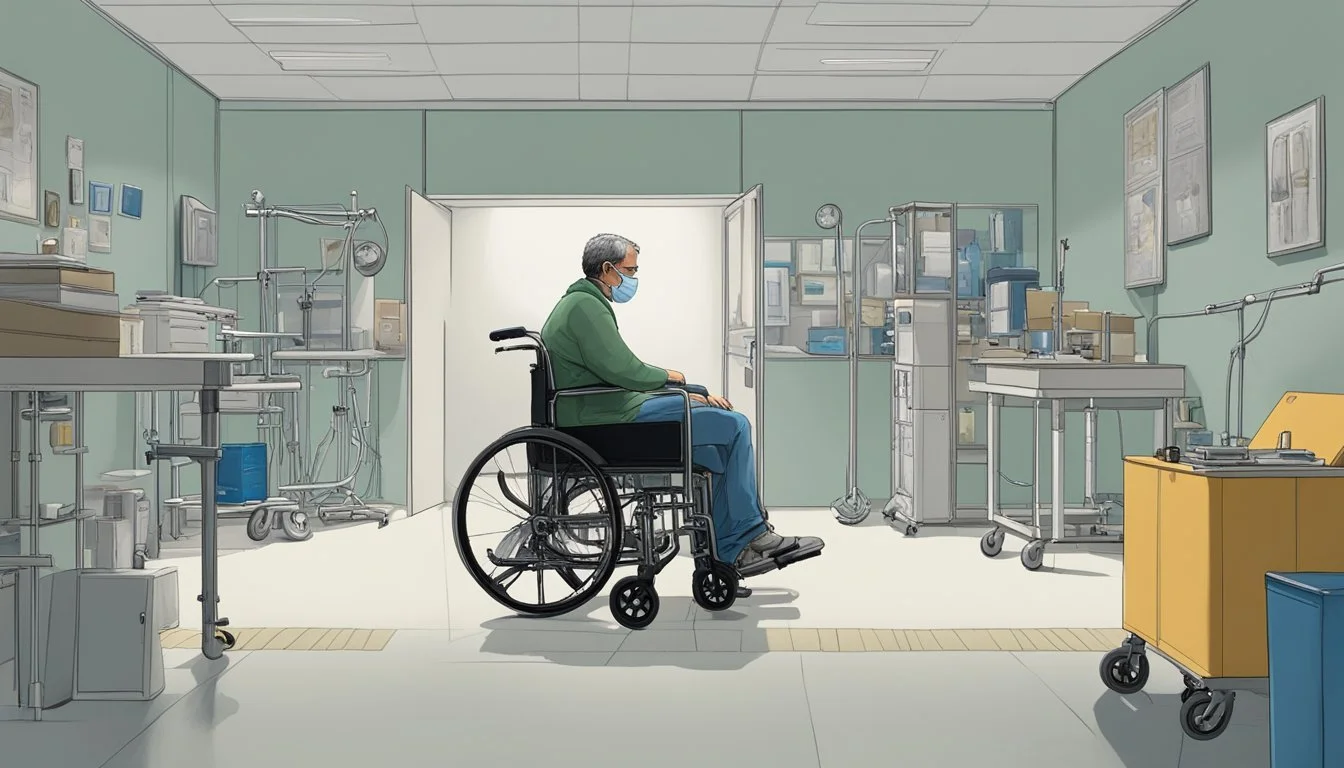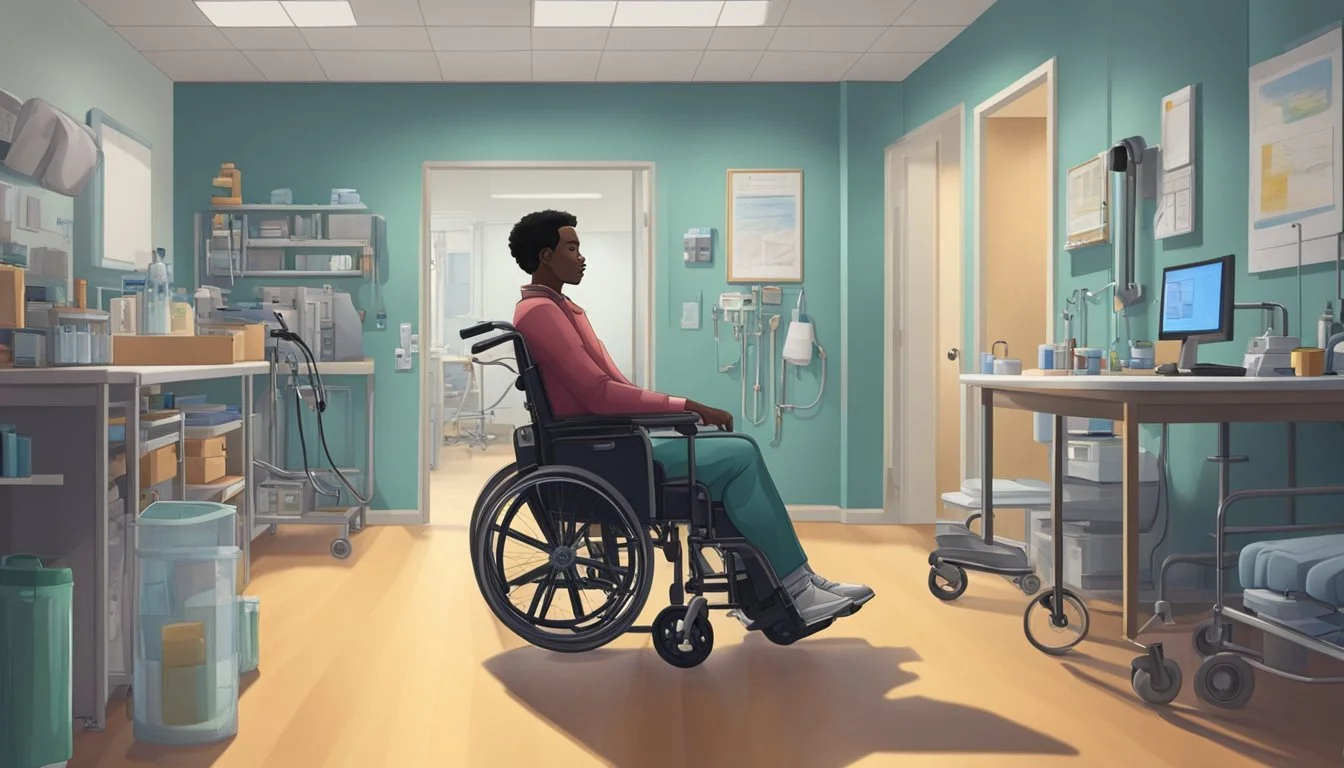Locked-In: Jean-Dominique Bauby's Real Struggle and Triumph
A Journey of Resilience and Communication
Jean-Dominique Bauby's life changed forever on December 5, 1995. A devastating stroke left the former editor-in-chief of French Elle magazine with locked-in syndrome, a condition that paralyzed his entire body except for his left eyelid. Despite his severe physical limitations, Bauby's indomitable spirit and sharp mind remained intact, leading him to create a remarkable literary work that would captivate readers worldwide.
Locked-in syndrome trapped Bauby in his own body, unable to move or speak. Yet, through sheer determination and the help of a dedicated team, he found a way to communicate using only his functioning left eyelid. This painstaking process involved blinking to select letters as they were recited, allowing Bauby to compose his memoir "The Diving Bell and the Butterfly" one blink at a time.
Bauby's story is a testament to human resilience and the power of the mind. His ability to craft vivid prose and share his experiences while completely paralyzed serves as an inspiration to many. Through his book, Bauby not only shed light on the realities of locked-in syndrome but also demonstrated the enduring strength of the human spirit in the face of unimaginable adversity.
The Life of Jean-Dominique Bauby
Jean-Dominique Bauby was a prominent French journalist whose life took a dramatic turn after suffering a severe stroke. His career in fashion media and subsequent medical condition brought him unexpected fame.
Professional Career
Bauby made a name for himself in the world of French fashion journalism. He climbed the ranks to become the editor-in-chief of Elle, a prestigious French fashion magazine. His wit, style, and passionate approach to life were well-known in the industry.
At Elle, Bauby shaped the magazine's direction and content. He was respected for his editorial skills and fashion insights. His position allowed him to interact with key figures in the fashion world.
The Onset of Locked-In Syndrome
On December 8, 1995, at age 43, Bauby's life changed forever. He suffered a massive stroke that left him with locked-in syndrome. This rare neurological condition paralyzed his entire body, except for his left eyelid.
Bauby woke up 20 days after the stroke to find himself unable to speak or move. He could only communicate by blinking his left eye. Despite these extreme limitations, Bauby's mind remained sharp and active.
This condition inspired Bauby to write his memoir, "The Diving Bell and the Butterfly." He composed the entire book by blinking his left eyelid to select letters. The book was published in 1997, shortly before Bauby's death at age 45.
Understanding Locked-In Syndrome
Locked-in syndrome is a rare neurological condition that leaves patients cognitively aware but almost completely paralyzed. Despite severe physical limitations, individuals with this condition retain their mental faculties and can often communicate through eye movements.
Medical Explanation
Locked-in syndrome typically results from damage to the brainstem, often caused by a stroke. The condition disrupts motor pathways, leading to paralysis of voluntary muscles except for those controlling eye movement.
The pontine region of the brainstem is usually affected, interrupting signals between the brain and body. This leaves patients unable to speak or move their limbs, face, or even breathe voluntarily.
Consciousness and cognitive functions remain intact, as higher brain areas are unaffected. Patients can see, hear, and understand their surroundings, but cannot respond physically beyond eye movements.
Challenges and Symptoms
Patients with locked-in syndrome face extreme physical limitations. They experience:
Complete paralysis of voluntary muscles, except for eye movement
Inability to speak or produce facial expressions
Loss of control over breathing, requiring ventilator support
Preserved cognitive functions and sensory perceptions
The condition presents significant emotional and psychological challenges. Patients remain aware of their surroundings but cannot interact normally, leading to potential feelings of isolation and frustration.
Daily care becomes highly complex, requiring round-the-clock medical attention and specialized equipment for basic needs like feeding and hygiene.
Communication Methods
Despite severe physical limitations, individuals with locked-in syndrome can often communicate through eye movements. Common techniques include:
Blinking or vertical eye movements to signal yes/no responses
Using an alphabet board, where letters are pointed to and selected by eye movement
Eye-tracking technology that allows patients to select letters or words on a computer screen
Speech therapists play a crucial role in developing personalized communication systems. Some patients, like Jean-Dominique Bauby, have even authored books using these methods.
Advanced technologies, such as brain-computer interfaces, are being developed to potentially restore more direct communication abilities for those with locked-in syndrome.
Creating 'The Diving Bell and the Butterfly'
Jean-Dominique Bauby's memoir "The Diving Bell and the Butterfly" emerged from a remarkable collaboration and an unbreakable spirit. The book's creation process showcased Bauby's determination and imagination despite his physical limitations.
The Writing Process
Bauby composed his memoir entirely in his mind, using only his left eyelid to communicate. He blinked to select letters as they were recited in frequency order. This painstaking method allowed him to "write" about 200 words per day.
Bauby's memoir, originally titled "Le Scaphandre et le Papillon" in French, took about 10 months to complete. He worked on it for 2-3 hours each day, demonstrating incredible focus and perseverance.
The book vividly describes Bauby's experiences with locked-in syndrome, blending memories of his past life with reflections on his current condition. His poetic prose and sharp wit shine through, despite the arduous composition process.
Collaboration with Claude Mendibil
Claude Mendibil, a professional transcriber, played a crucial role in bringing Bauby's words to life. She patiently recited the French alphabet, noting each letter Bauby selected with a blink.
Mendibil's dedication was essential to the book's creation. She spent countless hours by Bauby's bedside, carefully recording his chosen letters and helping to shape his thoughts into coherent sentences and paragraphs.
Their partnership exemplified the power of human connection and communication. Mendibil's ability to interpret Bauby's blinks and pauses allowed his internal voice to reach the page with clarity and emotion.
The finished manuscript was delivered to the publisher Robert Laffont, who recognized its unique value and powerful message.
Themes and Symbolism
Bauby's memoir explores profound contrasts, juxtaposing confinement and liberation, despair and optimism. These themes are woven throughout his narrative, offering insights into the human spirit's resilience.
Freedom and Imprisonment
The diving bell symbolizes Bauby's physical imprisonment, representing his paralyzed body. It evokes a sense of suffocation and isolation. In contrast, the butterfly embodies his unfettered imagination and thoughts. This imagery highlights the dichotomy between his bodily constraints and mental liberation.
Bauby's mind becomes his escape, allowing him to transcend his physical limitations. Through memory and creativity, he travels beyond the confines of his hospital room. This mental freedom stands in stark opposition to his physical state, emphasizing the power of the human mind.
Hope and Despair
Bauby's journey oscillates between hope and despair. His condition initially plunges him into depression, facing the stark reality of his new existence. Yet, he discovers glimmers of hope in unexpected places.
Writing becomes Bauby's lifeline, offering purpose and a means of expression. This creative outlet transforms his outlook, shifting from despair to determination. His ability to communicate, albeit painstakingly, renews his connection to the world.
Bauby's resilience shines through as he finds joy in small moments - a visit from his children, a caring nurse's touch. These instances of happiness, set against his challenging circumstances, underscore the human capacity for hope in the face of adversity.
Impact and Reception
Jean-Dominique Bauby's memoir "The Diving Bell and the Butterfly" achieved widespread acclaim and left a lasting impact on readers worldwide. The book's unique perspective and poignant narrative resonated deeply with audiences and critics alike.
Critical Acclaim
"The Diving Bell and the Butterfly" became an international bestseller upon its release in 1997. The English-language translation, published in the U.S., received glowing reviews from major publications. Critics praised Bauby's vivid prose and remarkable resilience in the face of extreme adversity. The New York Times called it "a masterpiece of short autobiography." Time magazine lauded the book as "a triumph of the human spirit." Bauby's ability to craft such a moving and insightful work despite his physical limitations earned universal admiration.
Legacy and Influence
Bauby's memoir continues to inspire readers and raise awareness about locked-in syndrome. The book has been translated into over 30 languages and remains in print decades after its initial publication. It has become required reading in many medical schools and psychology programs. Bauby's story has been adapted into an award-winning film and a stage play. His experience has influenced medical research and patient care practices for individuals with severe disabilities. The Jean-Dominique Bauby Association, founded in his honor, supports locked-in patients and their families. Bauby's courage and creativity in the face of unimaginable challenges cemented his legacy as a symbol of the indomitable human spirit.
Adaptations and Portrayals
Jean-Dominique Bauby's remarkable story has inspired adaptations across different media. His memoir gained widespread attention and was brought to life on the big screen.
Film Adaptation by Julian Schnabel
In 2007, director Julian Schnabel released "The Diving Bell and the Butterfly," a critically acclaimed film based on Bauby's memoir. The movie portrays the French journalist's struggle with locked-in syndrome and his journey to write his book.
Mathieu Amalric stars as Bauby, delivering a powerful performance that captures the essence of the author's experience. Schnabel employs innovative cinematography to immerse viewers in Bauby's perspective.
The film received numerous accolades, including four Academy Award nominations. It won Best Director at the Cannes Film Festival and two Golden Globe Awards.
Schnabel's adaptation stays true to the spirit of Bauby's memoir, effectively conveying the challenges and triumphs of communication through blinking. The movie brings Bauby's poetic prose to life, showcasing his resilience and creativity.
Personal Struggles and Triumphs
Jean-Dominique Bauby faced immense challenges after his stroke. He grappled with physical limitations while maintaining his mental faculties and emotional needs.
Living with Disability
Bauby's locked-in syndrome left him almost completely paralyzed. He could only move his left eyelid, which became his sole means of communication. This severe disability presented daily hurdles.
Bauby endured the discomfort of bedsores and the frustration of being unable to speak or move independently. Despite these trials, he displayed remarkable determination. He learned to communicate using a system of eye blinks, painstakingly composing his memoir letter by letter.
His endurance in the face of such adversity was inspiring. Bauby refused to let his condition define him, maintaining his dignity and sense of self throughout his ordeal.
Expressions of Love and Desire
Though physically limited, Bauby's emotional and intellectual life remained vibrant. He expressed deep love for his children and continued to experience desire.
His memoir revealed poignant moments of connection with loved ones. Bauby described the joy of spending time with his children, even if he couldn't physically embrace them.
He also candidly discussed his continuing sexual desires, highlighting the complex emotional landscape of those with severe disabilities. These expressions of love and longing emphasized Bauby's humanity and resilience.
Reflections on Mortality
Jean-Dominique Bauby's experience with locked-in syndrome forced him to confront mortality in a profound way. His condition left him acutely aware of life's fragility and the thin line between existence and non-existence.
Despite being trapped in an unresponsive body, Bauby refused to let his spirit die. He chose to endure and create, even as he relied on a ventilator to breathe.
Bauby's reflections on mortality were not morbid, but rather a celebration of life's preciousness. He found beauty and meaning in small moments that many take for granted.
Through his writing, Bauby left a powerful legacy. His book serves as a testament to human endurance and dignity in the face of extreme adversity.
Bauby's struggle prompted readers to examine their own lives and mortality. His story reminds us that life can change in an instant, underscoring the importance of living fully.
In facing death so intimately, Bauby discovered new depths of inner strength. His journey exemplifies how confronting mortality can lead to profound personal growth and insight.
Resources and Further Reading
Jean-Dominique Bauby's memoir "The Diving Bell and the Butterfly" is a must-read for those interested in his experience with locked-in syndrome. The book provides intimate insights into Bauby's thoughts and emotions during his condition.
Several academic journals offer in-depth analyses of locked-in syndrome. The Journal of Neurology, Neurosurgery & Psychiatry publishes research on neurological conditions, including locked-in syndrome.
For a cinematic exploration, the film adaptation of "The Diving Bell and the Butterfly" (2007) directed by Julian Schnabel offers a visual representation of Bauby's story.
The Brain Injury Association of America provides resources and information about various neurological conditions, including locked-in syndrome.
Time magazine's 1997 article "Jean-Dominique Bauby: A Triumph of the Spirit" offers a contemporary perspective on Bauby's life and work.
For medical professionals and researchers, the American Academy of Neurology website contains peer-reviewed articles and studies on locked-in syndrome and related conditions.
The New York Times article "A Writer's Spirit Soared With a Blink of His Eye" provides additional context on Bauby's life and literary achievements.
These resources offer diverse perspectives on Jean-Dominique Bauby's experience and the broader implications of locked-in syndrome.




